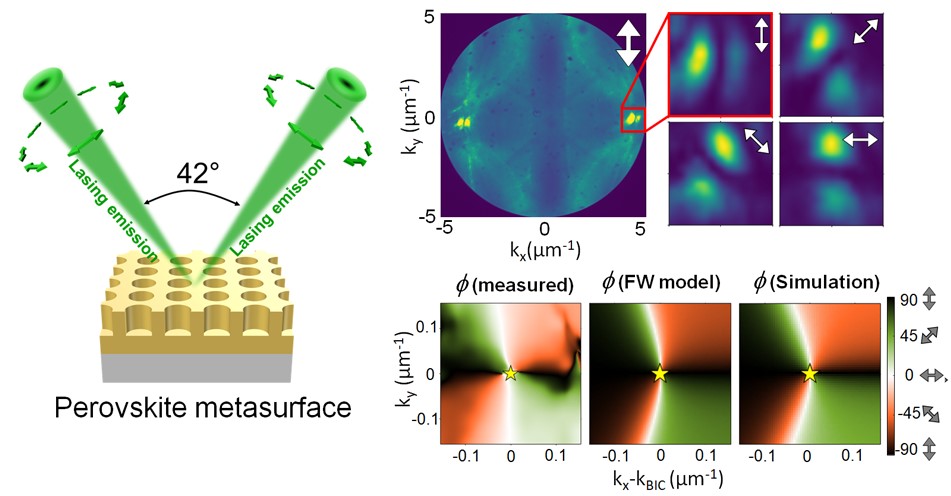How to Gain from Losses
The research team iLum at INL has theoretically proposed and experimentally demonstrated a novel mechanism to control destructive interference between different radiative loss channels in resonant periodic metasurfaces. This results in the formation of topological singularities in the radiation field, known as Bound States in the Continuum, at “on-demand” locations in momentum space. By incorporating gain materials, specifically hybrid perovskites, into the design, they successfully demonstrate vortex beam lasing at tailored emission angles. Recently published in Nano Letters, this pioneering work holds the potential to transform the dynamic control of vortex beam lasing, with applications in optical manipulation, particle trapping, and free-space communication.
Contact: Hai Son Nguyen
References: “Taming Friedrich–Wintgen Interference in a Resonant Metasurface: Vortex Laser Emitting at an On-Demand Tilted Angle”
Raphael Mermet-Lyaudoz, Clémentine Symonds, Florian Berry, Emmanuel Drouard, Céline Chevalier, Gaëlle Trippé-Allard, Emmanuelle Deleporte, Joel Bellessa, Christian Seassal, and Hai Son Nguyen
Nano Letters (2023)
https://doi.org/10.1021/acs.nanolett.2c04936
Collaborations: Le Laboratoire Lumière, Matière et Interfaces (LuMin), ENS Paris-Saclay, Instiut Lumière Matière(ILM), Université Claude Bernard Lyon 1





